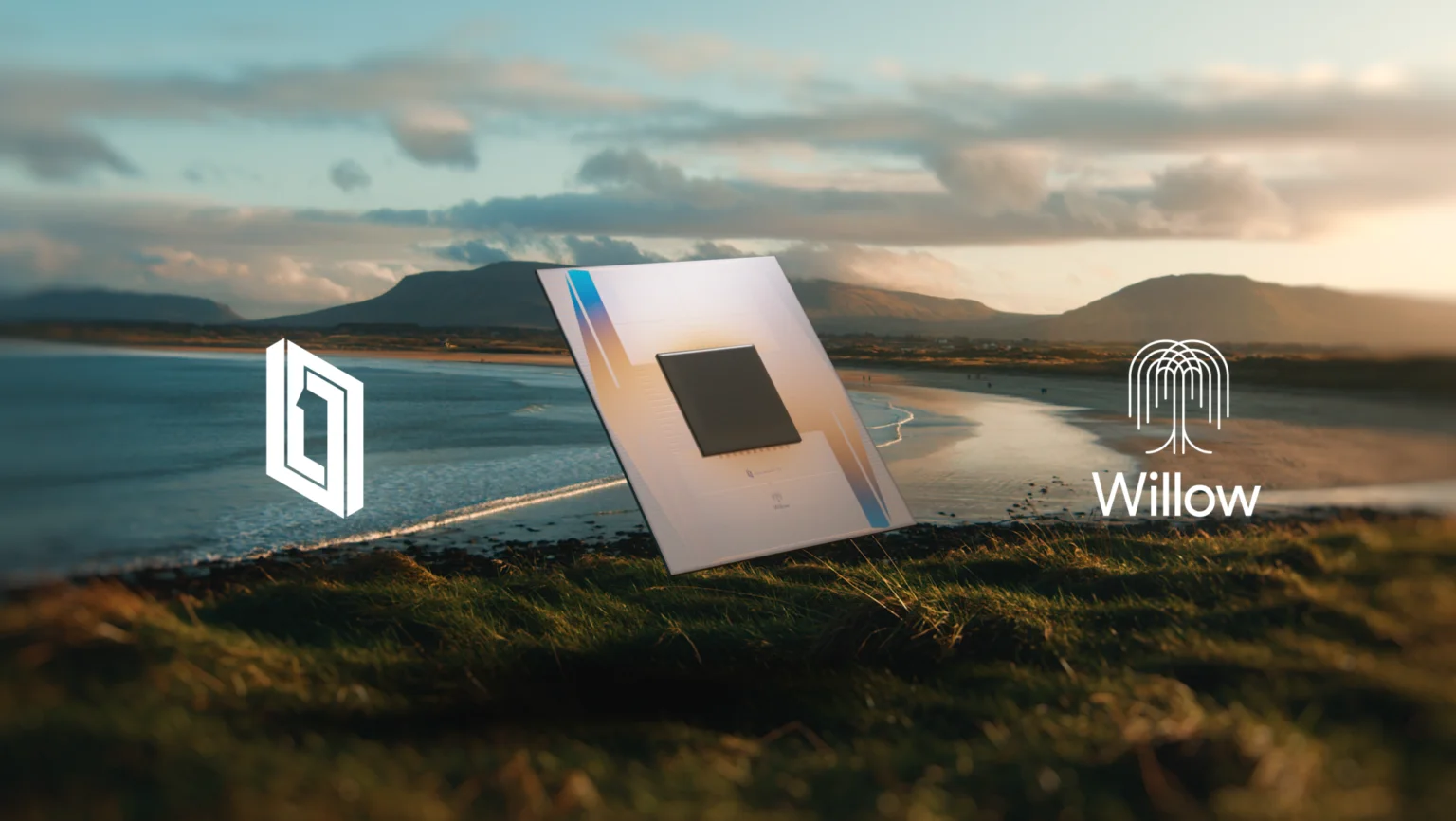Google Claims It’s Found Mind-Blowing Proof That ‘We Live In A Multiverse’

Imagine standing at the edge of a vast ocean, watching waves ripple into infinity. Each wave, a world unto itself, existing alongside countless others. Now, replace the ocean with reality as we know it—what if our universe is just one wave in an endless sea of possibilities? For centuries, humanity has gazed at the stars, searching for answers to questions that seemed impossible to answer: Are we alone? Is this all there is? The idea of a multiverse—a collection of parallel realities where every choice, chance, or coincidence unfolds differently—has long lived in the realm of science fiction. But what if it isn’t fiction anymore? Recently, Google sent ripples through the scientific world with a claim that feels almost too astonishing to believe: proof of the multiverse may lie within the workings of their Willow quantum chip. This isn’t just a theory scrawled on chalkboards or whispered at physics conferences—it’s a step closer to unlocking the very fabric of existence. 
What Did Google Discover?
At the heart of Google’s groundbreaking claim lies an innovation that could reshape our understanding of the universe: the Willow quantum chip. This extraordinary piece of technology pushes the boundaries of what’s possible in computing. Unlike traditional computer chips, which process information in binary—1s and 0s—quantum chips operate on entirely different principles, leveraging the strange and fascinating laws of quantum mechanics. With Willow, Google has ventured into territory where science fiction begins to feel like reality. In a recent experiment, Google’s researchers claim they simulated a phenomenon that could point to the existence of a multiverse. Willow demonstrated the ability to analyze quantum states in superposition—a unique quantum condition where particles exist in multiple states simultaneously. To put it simply, the chip created scenarios where multiple outcomes could coexist at once, reflecting how some scientists believe parallel universes might operate. This phenomenon of overlapping realities has long been theorized but rarely approached with such experimental rigor. But this isn’t just another theoretical leap confined to physics journals. Google’s claim is that Willow may have provided tangible evidence of interactions between these “universes,” something never observed before. This makes their findings monumental—not because they confirm the multiverse’s existence (they don’t, yet), but because they offer a glimpse into how such proof might one day be achieved. If verified, this could signify the first experimental step toward decoding a mystery as old as existence itself. What sets this apart from previous experiments is its precision. Quantum computing has always promised to unlock secrets hidden within the quantum realm, but this is the first time we’ve seen results that might substantiate one of the most audacious ideas in physics. Willow’s calculations reveal new insights into the entanglement of quantum states, hinting at a level of interconnectivity that could be the key to understanding whether we truly live in one universe—or many. https://youtu.be/W7ppd_RY-UE
The Science Behind the Multiverse
To grasp the magnitude of Google’s claims, it’s essential to understand the multiverse—a concept that has captivated scientists and dreamers alike. At its core, the multiverse theory suggests that our universe is just one of countless others, each shaped by different outcomes, possibilities, and realities. Think of it as a cosmic web where every decision, chance event, or quantum fluctuation gives birth to a new thread—a new universe. The roots of the multiverse theory are deeply entwined with quantum mechanics, a field of science that studies the behavior of particles at the smallest scales. In the 1950s, physicist Hugh Everett proposed the “Many-Worlds Interpretation,” a groundbreaking idea that every quantum decision point—where a particle exists in a superposition of states—results in the creation of parallel realities. In simple terms, every possibility plays out somewhere in a vast, interconnected multiverse. Quantum computing, the technology powering Google’s Willow chip, has emerged as a key tool for exploring these enigmatic theories. Traditional computers operate in binary, processing one calculation at a time. Quantum computers, however, harness the bizarre properties of quantum bits, or qubits, which can exist in multiple states simultaneously. This allows them to process vast amounts of information in ways that mimic the behavior of particles in quantum superposition. Google’s breakthrough lies in using this quantum power to simulate conditions that mirror the theoretical interactions between parallel universes. While the multiverse has been a cornerstone of theoretical physics for decades, the Willow chip’s experiments bring it closer to the realm of tangible evidence. By calculating and analyzing quantum entanglement—where particles remain connected even when separated by vast distances—Google’s team observed behaviors that suggest a deeper, more complex structure to reality. 
Balancing the Discovery: Hope, Skepticism, and the Road Ahead
Google’s announcement about the Willow quantum chip raises fascinating possibilities, but like any groundbreaking claim, it also warrants a healthy dose of skepticism. While the idea of simulating the multiverse is electrifying, it’s important to recognize the limitations and challenges that lie ahead. For starters, the experiment itself is not definitive proof of the multiverse—it’s a highly controlled simulation based on quantum mechanics. Scientists have long debated the concept of the multiverse, with some embracing it as a logical extension of quantum theory and others questioning whether it can ever be scientifically tested. Google’s findings, while remarkable, represent just one step in a much larger journey. Experts have also pointed out that the quantum realm, while deeply intriguing, doesn’t always translate neatly to our everyday understanding of reality. The behaviors observed in quantum systems don’t necessarily confirm the existence of parallel universes as we might imagine them. Instead, they provide tantalizing hints that there’s much more to uncover about how reality operates at its most fundamental level. This is where hope and caution must coexist. Google’s research highlights the immense potential of quantum computing, a field that is still in its infancy. As these technologies evolve, they may unlock new ways to test the theories that have long fascinated scientists and philosophers. However, the road ahead requires rigorous experimentation, collaboration, and patience. In the end, the significance of this discovery isn’t about jumping to conclusions—it’s about fostering curiosity. The Willow chip’s breakthrough invites us to ask questions that push the boundaries of human understanding: What is reality made of? How do we fit into the larger picture? And how can we use these insights to enrich our understanding of the world around us? https://youtu.be/NZf2O5-dA5k
The Significance of Google’s Discovery
Google’s groundbreaking work with the Willow quantum chip is more than just a technological triumph—it’s a glimpse into the very architecture of existence. For decades, the multiverse has been the stuff of speculation, confined to science fiction or philosophical debate. Now, Google’s experiment offers a tangible step toward understanding this mind-expanding idea. By simulating quantum states that behave as though multiple realities coexist, the research challenges our perception of reality itself. It suggests that the world we know might not be the only one—that parallel universes, each slightly different, could be intertwined with our own. At the core of this breakthrough is quantum superposition, a concept that has puzzled and amazed physicists for generations. Using the Willow chip, Google’s team created a system that behaves as if multiple outcomes can happen simultaneously. While this isn’t definitive proof of the multiverse, it’s the closest we’ve come to peering behind the curtain of reality’s deeper mechanics. If these findings hold up to scrutiny, they could revolutionize not just science but how we think about existence itself—our choices, our possibilities, and our understanding of what’s real. This discovery also invites us to dream bigger. Quantum computing’s ability to simulate these phenomena opens doors to future innovations in fields as diverse as medicine, artificial intelligence, and astrophysics. At the same time, it prompts us to reflect on the sheer complexity of the universe and our role within it. Whether or not the multiverse exists in the way we imagine, one thing is certain: this experiment ignites a sense of wonder and curiosity that transcends the lab. It reminds us that the pursuit of knowledge isn’t just about answers—it’s about embracing the mysteries that make life extraordinary.
The Science of Infinite Realities
The concept of a multiverse has long been an intriguing thought experiment, but Google’s work with the Willow quantum chip brings it closer to something tangible. Quantum mechanics, the study of particles at their smallest and most mysterious levels, has always suggested strange possibilities. Decades ago, Hugh Everett’s “Many-Worlds Interpretation” proposed that every quantum decision point could create parallel universes, where all possible outcomes coexist. Google’s breakthrough takes this theory from abstraction to something we can almost grasp, using the revolutionary power of quantum computing. Willow’s capabilities showcase the staggering potential of this technology. Hartmut Neven, one of Google’s leading researchers, explained the magnitude of the breakthrough: “Willow’s performance on this benchmark is astonishing: It performed a computation in under five minutes that would take one of today’s fastest supercomputers 1025 or 10 septillion years. If you want to write it out, it’s 10,000,000,000,000,000,000,000,000 years.” This achievement isn’t just a technological milestone; it pushes the boundaries of what we thought possible. Neven added, “This mind-boggling number exceeds known timescales in physics and vastly exceeds the age of the universe. It lends credence to the notion that quantum computation occurs in many parallel universes, in line with the idea that we live in a multiverse, a prediction first made by David Deutsch.” The experiment not only highlights Willow’s raw computational power but also its potential for real-world applications. As a Google press release noted, “The next challenge for the field is to demonstrate a first ‘useful, beyond-classical’ computation on today’s quantum chips that is relevant to a real-world application.” While this remains a goal for the future, the same release expressed optimism about Willow’s potential to pave the way: “We’re optimistic that the Willow generation of chips can help us achieve this goal. So far, there have been two separate types of experiments. On the one hand, we’ve run the RCS benchmark, which measures performance against classical computers but has no known real-world applications.” These statements underscore the immense promise of quantum computing, while also reminding us that this is just the beginning. The Willow chip isn’t just performing computations; it’s rewriting what we know about reality itself. By simulating quantum behaviors that suggest the existence of overlapping realities, it’s giving scientists tools to explore the unthinkable—an infinite tapestry of universes, woven together by the enigmatic laws of quantum mechanics.
Loading...






